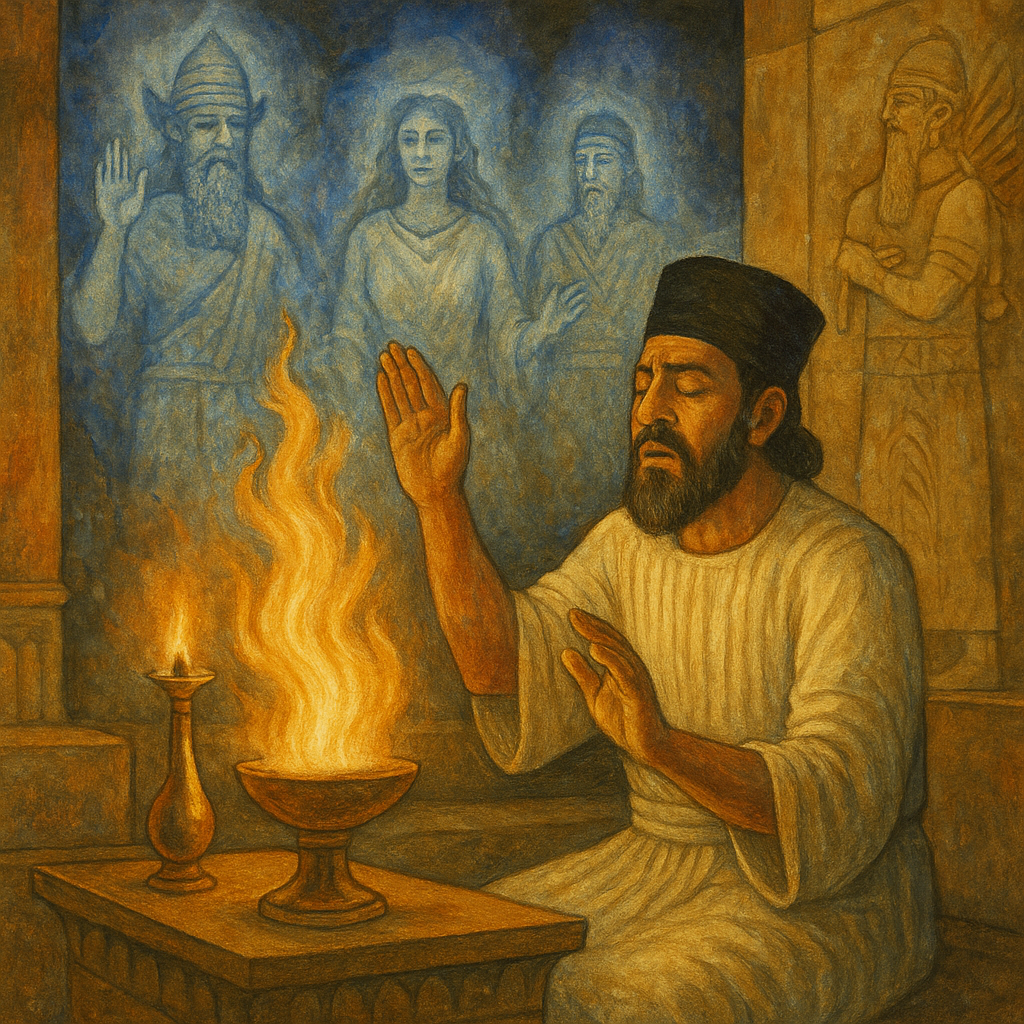Mesopotamian (Sumerian and Akkadian) Beliefs: Spirit Communication, Mediumship, and Spiritual Dimensions
Introduction
The civilizations of Mesopotamia—home to the Sumerians, Akkadians, Babylonians, and Assyrians—laid the foundation for some of the earliest recorded spiritual practices in human history. At the heart of their worldview was the belief that the universe was filled with gods, spirits, and the souls of the dead, all of whom influenced human life. Spirit communication was achieved through dreams, necromancy, divination, and ritual specialists, making Mesopotamian traditions some of the earliest examples of mediumship and multidimensional spirituality.
Mesopotamian Cosmology: A World of Many Realms
Mesopotamian spirituality described the cosmos as an interconnected system:
The Heavens: Dwelling place of the great gods (Anu, Enlil, Inanna/Ishtar).
The Earthly Realm: Shared by humans, animals, and lesser spirits.
The Underworld (Kur or Irkalla): A shadowy realm ruled by Ereshkigal, where the dead resided.
Dreams and Portals: Liminal spaces where gods and spirits communicated directly with mortals.
This multi-realm cosmology allowed constant interaction between humans, gods, and the spirits of the dead.
Spirit Communication and the Role of Mediums
1. The Gala and Spirit Specialists
In Sumerian society, ritual specialists, including gala priests, acted as intermediaries with spirits.
Through chants, laments, and rituals, they invoked gods or appeased restless dead.
Their role often resembled mediumship, channeling voices of the divine in ritual performance.
2. Necromancy and the Dead
Necromancy (called êṭemmu summoning) was practiced by specialists who sought counsel from the dead.
Rituals often took place near graves, using offerings of food and drink to invite ancestral spirits to speak.
3. Dreams as Portals
Dreams were one of the most important channels of spirit communication.
Kings and priests recorded dreams in which gods, spirits, or the dead delivered direct messages.
Dream interpreters (baru) were consulted to decode divine meanings.
Spiritual Beings of Mesopotamia
The Gods (Anunnaki): Major deities who governed aspects of nature and human fate.
Personal Gods: Each person had a protective deity guiding their destiny, often invoked in ritual prayers.
Ghosts (Êṭemmu): Spirits of the dead who lingered; honored ancestors could bless the living, while neglected ghosts became vengeful.
Demons: Some spirits, like Lamashtu or Pazuzu, caused illness or misfortune unless warded off by ritual.
Divine Intermediaries: Spirits connected heaven, earth, and the underworld, acting as messengers.
Rituals and Techniques of Spirit Contact
Libations and Offerings: Food, water, beer, and incense were offered to ancestors and gods.
Incantations and Chants: Spoken formulas carried power to summon, bind, or dismiss spirits.
Divination: Techniques such as liver reading (extispicy) and observing celestial signs were forms of divine communication.
Sacred Dreams: Sleep in temples or sacred spaces encouraged spirit visitations.
Protective Rituals: Amulets, figurines, and charms ensured safe contact with spiritual beings.
Mediumship in Mesopotamian Culture
Mediumship was not a private practice but a state ritual function, tied to kingship and communal wellbeing.
Shamans, priests, and diviners acted as vessels for gods or spirits, delivering prophecy, healing, and warnings.
Spirit contact was often viewed as essential for maintaining cosmic balance and political stability.
Comparisons with Western Mediumship
Similarities: Use of trance, necromancy, ancestor contact, dream messages, and ritual invocations.
Differences: Mesopotamian practice was institutionalized, priestly, and tied to kingship, unlike the individual séances of Western Spiritualism. Communication was for state guidance, healing, and cosmic order, not personal proof of survival.
Continuity and Legacy
Mesopotamian traditions deeply influenced later religions:
Biblical texts reflect Mesopotamian bans on necromancy while also retaining dream communication and angelic intermediaries.
Greek and Roman necromancy was shaped by Mesopotamian ritual models.
Modern occult traditions still echo Mesopotamian incantations, amulets, and protective spirits.
Conclusion
Mesopotamian spirituality represents one of the earliest systems of spirit communication, mediumship, and multidimensional cosmology. Through dreams, necromancy, priestly rituals, and divination, the Sumerians and Akkadians maintained dialogue with gods, ancestors, and spirits.
Unlike Western Spiritualism, these practices were public, priestly, and politically significant, embedding spirit communication into the survival and governance of early civilizations.

